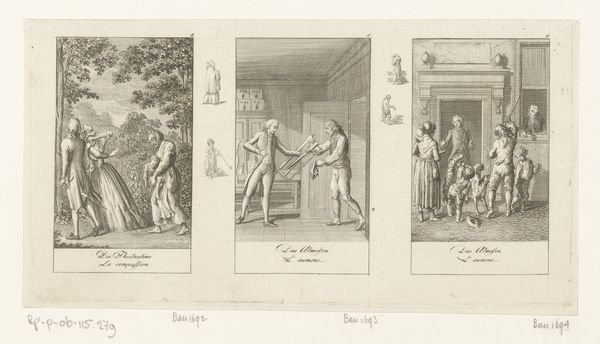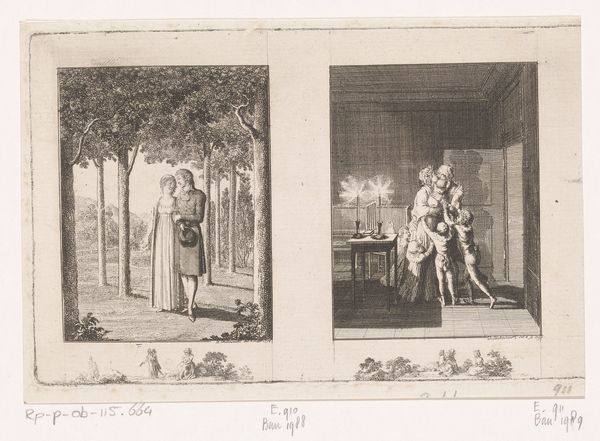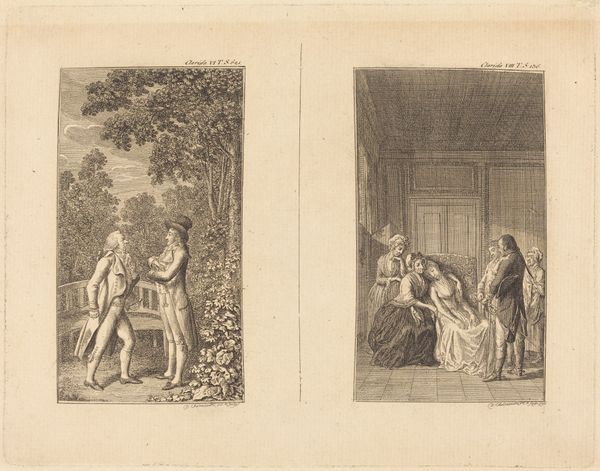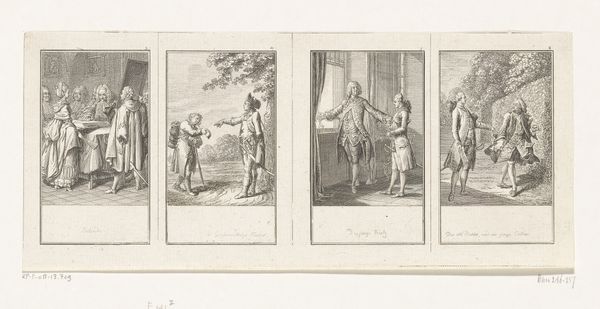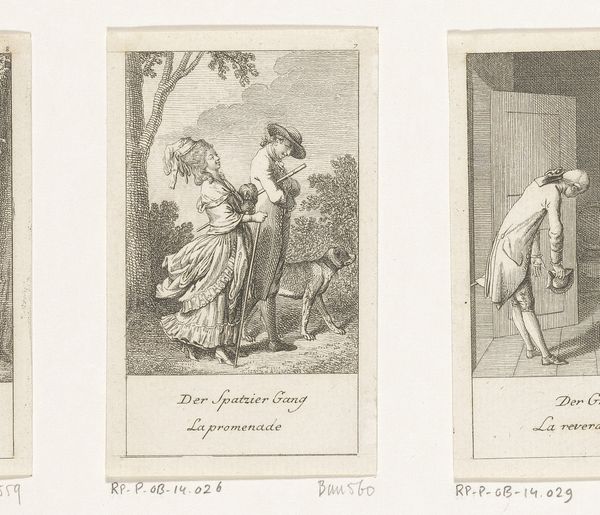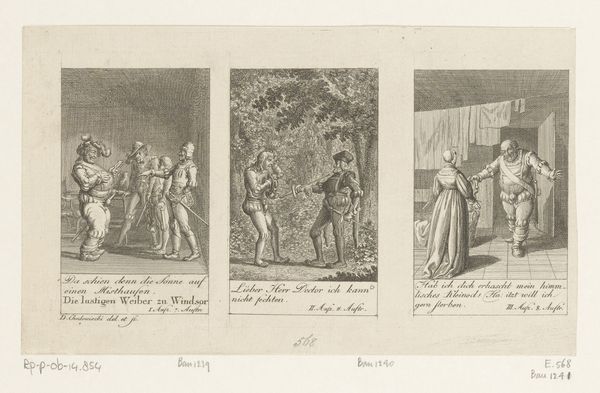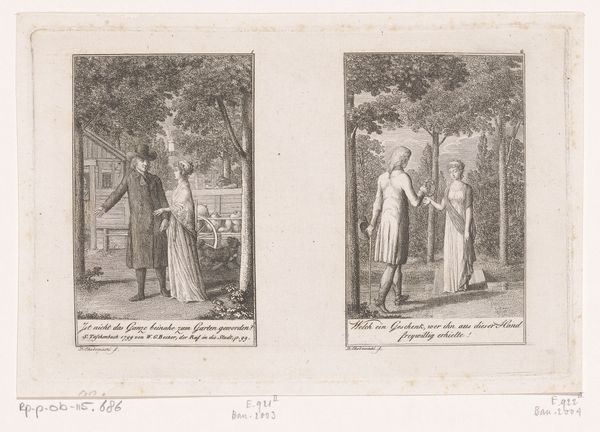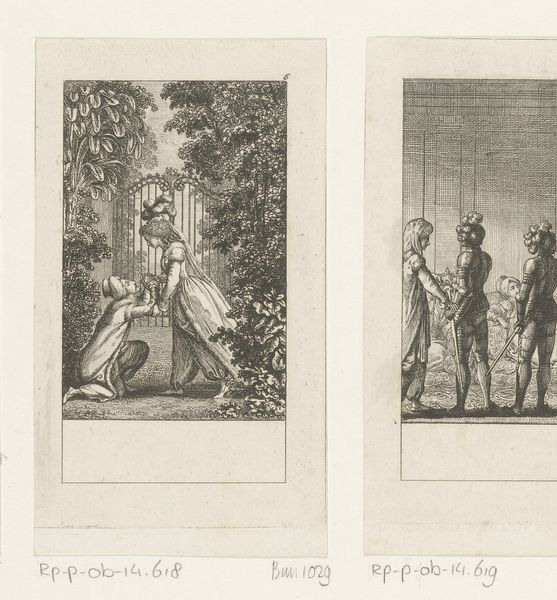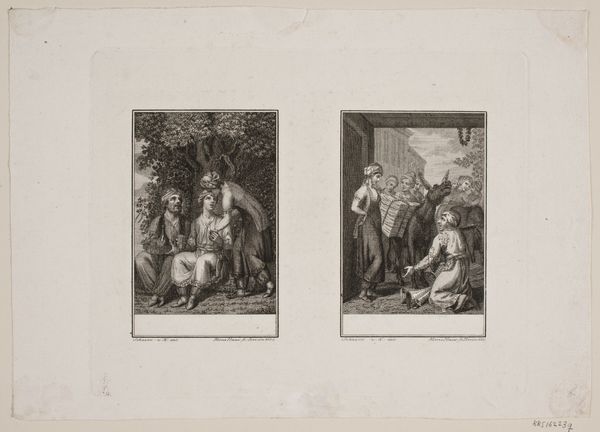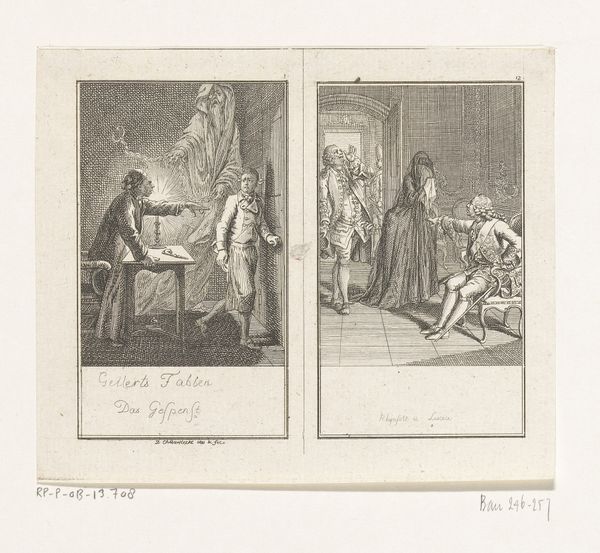
print, etching, engraving
#
neoclacissism
# print
#
etching
#
old engraving style
#
figuration
#
romanticism
#
genre-painting
#
history-painting
#
engraving
Dimensions: height 109 mm, width 204 mm
Copyright: Rijks Museum: Open Domain
Curator: What a fascinating find. Daniel Nikolaus Chodowiecki’s “Drie voorstellingen over oprechtheid en hypocrisie,” or "Three representations of sincerity and hypocrisy," done in 1793. The artist uses etching and engraving on this print. Editor: My initial thought? It’s striking how these three scenes, though separated, still visually connect, hinting at an unfolding narrative or perhaps different facets of a single idea. Curator: Absolutely. Chodowiecki was working during a time of great social upheaval and philosophical shifts, where Enlightenment ideals were being both celebrated and scrutinized. His work offers social commentary on human behavior and morals within the political climate. We see here a reflection on how societal norms are shaped and portrayed, the role of the upper class, perhaps? Editor: Interesting perspective. I'm particularly drawn to the detail in the costumes. The crisp lines of the jackets and the fall of the fabric indicate a keen understanding of material properties. What kind of paper was typically used for such prints and what does it tell us about its production? Curator: A very good question. At the time, the paper was probably locally sourced, made from linen rags which dictated the image quality as a factor within the artist's creation process. Think of the economic implications in the access to and manipulation of that material! As for societal context, you can tell Chodowiecki was active during the rise of print culture and book illustration. It facilitated the wider circulation of ideas among literate audiences, which means this piece might have influenced social discourse in the public sphere. Editor: Fascinating. Knowing all that adds depth to what initially seemed like just a quaint illustration. Looking again, it highlights how access, choice, and privilege are expressed in these historical materials, making this artwork far more nuanced than I initially gave it credit for. Curator: Precisely! That is what I admire most.
Comments
No comments
Be the first to comment and join the conversation on the ultimate creative platform.
